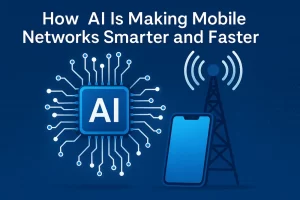
What Are IoT Platforms and How Do They Support IoT Ecosystems?
Table of Contents
Introduction
The Internet of Things (IoT) is revolutionizing the way we interact with technology, from smart homes to industrial automation.
Central to this transformation are IoT platforms, which serve as the backbone for managing and integrating various IoT devices and systems.
In this article, we’ll explore the concept of IoT platforms, their role in supporting IoT ecosystems, and the key features to look for when selecting a platform.
Key Takeaways
- Understanding IoT Platforms: Learn what IoT platforms are and their significance in IoT ecosystems.
- Key Features: Discover the essential features of IoT platforms that support device management, data processing, and security.
- Selection Criteria: Gain insights into selecting the right IoT platform for your needs.
What Are IoT Platforms?
IoT platforms are the foundation of IoT ecosystems, providing the necessary infrastructure and tools to manage connected devices, process data, and ensure secure communication.
These platforms act as middleware, bridging the gap between IoT devices and applications, enabling seamless integration and interaction.
Definition and Overview:
- Definition: An IoT platform is a suite of software components that facilitates the deployment, management, and automation of connected devices within an IoT ecosystem.
- Components: IoT platforms typically include device management, data analytics, security protocols, and connectivity solutions.
Importance in IoT Ecosystems:
- Centralized Management: IoT platforms provide a centralized interface to monitor and control all connected devices, simplifying management tasks.
- Scalability: They support the growth of IoT ecosystems by allowing easy integration of new devices and applications.
- Interoperability: Ensures easy communication and cooperation amongst gadgets made by various manufacturers.
Role of IoT Platforms in IoT Ecosystems
Device Management
IoT platforms offer comprehensive tools for managing IoT devices throughout their lifecycle. This includes device provisioning, configuration, monitoring, and maintenance.
Key Functions:
- Provisioning: Adding new devices to the network.
- Configuration: Setting up devices to operate according to user requirements.
- Monitoring: Continuously tracking device performance and status.
- Maintenance: Updating firmware and troubleshooting issues.
Data Processing and Analytics
Data is at the heart of IoT, and platforms play a crucial role in collecting, storing, and analyzing this data. Advanced analytics and machine learning algorithms can be applied to extract actionable insights.
Key Functions:
- Data Collection: Gathering data from various sensors and devices.
- Data Storage: Securely storing data for easy retrieval and analysis.
- Analytics: Using tools to analyze data and generate insights.
- Machine Learning: Applying AI to predict trends and optimize operations.
Security
Security is a major concern in IoT, and platforms incorporate multiple layers of security to protect data and devices. This includes encryption, user authentication, and secure communication protocols.
Scalability
IoT platforms are designed to handle the growing number of connected devices and the increasing volume of data they generate. Scalability is crucial for IoT ecosystems to expand without compromising performance or security.
Key Functions:
- Elastic Infrastructure: Platforms can scale up or down based on the number of devices and data load.
- Resource Management: Efficiently allocating resources to ensure optimal performance as the network grows.
- Integration Support: Seamlessly integrating new devices and applications into the existing ecosystem.
Interoperability
Interoperability is essential for IoT ecosystems, where devices from different manufacturers need to work together. IoT platforms facilitate communication and interaction between heterogeneous devices, ensuring seamless operation.
Key Functions:
- Standard Protocols: Supporting common IoT protocols like MQTT, CoAP, and HTTP.
- API Integration: Providing APIs to integrate devices and services from various vendors.
- Device Compatibility: Ensuring compatibility with a wide range of IoT devices and systems.
Key Features of IoT Platforms
Connectivity Management
IoT platforms manage the connectivity of devices, ensuring they remain reliably connected to the network. This includes handling different types of connectivity such as Wi-Fi, Bluetooth, Zigbee, and cellular.
Key Features:
- Connection Management: Establishing and maintaining connections between devices and the platform.
- Network Configuration: Setting up and managing network parameters for optimal connectivity.
- Connectivity Monitoring: Tracking the status of device connections and addressing issues promptly.
Data Management
Effective data management is a critical feature of IoT platforms, enabling efficient data collection, storage, and processing.
Key Features:
- Data Collection: Aggregating data from multiple devices and sensors.
- Data Storage: Securely storing large volumes of data with scalable storage solutions.
- Data Processing: Real-time data processing to enable quick decision-making and actions.
Security Features
Security is a paramount concern in IoT ecosystems. IoT platforms incorporate robust security measures to protect data, devices, and communications from cyber threats.
Key Features:
- Encryption: Protecting data during transmission and storage with advanced encryption techniques.
- Authentication: Implementing strong user authentication methods to prevent unauthorized access.
- Secure Communication: Ensuring secure data exchange using protocols like TLS and SSL.
User Interface and Experience
A user-friendly interface is essential for managing IoT devices effectively. IoT platforms offer intuitive dashboards and interfaces that allow users to monitor and control their devices with ease.
Key Features:
- Intuitive Dashboards: Providing a clear overview of device status, data analytics, and alerts.
- Customizable Views: Allowing users to customize their dashboards to display the most relevant information.
- Easy Navigation: Simplified navigation to manage devices, view data, and configure settings.
Selecting the Right IoT Platform
Assessing Your Needs
Understanding your specific requirements is the first step in selecting the right IoT platform. Consider the scale of your IoT deployment, the types of devices you will be using, and the data management needs.
Key Considerations:
- Deployment Scale: Small-scale home automation vs. large-scale industrial applications.
- Device Types: Types of IoT devices and sensors to be integrated.
- Data Requirements: Data volume, storage needs, and processing capabilities.
Evaluating Platform Capabilities
Once you have a clear understanding of your needs, evaluate the capabilities of different IoT platforms. Compare their features, scalability, security measures, and ease of use.
Evaluation Criteria:
- Feature Set: Ensure the platform offers all necessary features like device management, data analytics, and security.
- Security: Assess the platform’s security features and compliance with industry standards.
- Ease of Use: Ease of Use: Assess the general usability and user interface.
Considering Vendor Support
Reliable customer support is crucial for the successful implementation and maintenance of an IoT platform. Ensure that the platform provider offers robust support services, including technical assistance, documentation, and regular updates.
Key Considerations:
- Technical Support: Availability of 24/7 technical support for troubleshooting issues.
- Documentation: Comprehensive guides and documentation to assist with setup and management.
- Updates and Maintenance: Regular platform updates and maintenance services to ensure smooth operation.
Popular IoT Platforms
AWS IoT
Amazon Web Services (AWS) IoT provides a comprehensive suite of IoT services, including device management, data analytics, and secure communication.
AWS IoT supports a wide range of protocols and offers robust scalability and integration options.
Features:
- Device Management: Simplifies the onboarding and management of IoT devices.
- Data Analytics: Advanced analytics tools for real-time data processing and insights.
- Security: End-to-end security features, including encryption and authentication.
Microsoft Azure IoT
Microsoft Azure IoT offers a flexible platform for building and managing IoT solutions. It provides tools for device connectivity, data collection, and analytics, along with strong security measures.
Features:
- Connectivity: Supports multiple communication protocols for seamless device integration.
- Analytics: Powerful data analytics and machine learning tools.
- Security: Comprehensive security features, including threat detection and mitigation.
Google Cloud IoT
Google Cloud IoT provides a scalable and secure platform for IoT applications. It offers device management, real-time analytics, and machine learning capabilities.
Features:
- Scalability: Handles large-scale IoT deployments with ease.
- Data Processing: Real-time data processing and analytics using Google’s cloud infrastructure.
- Machine Learning: Integrates with Google’s AI and machine learning tools for advanced insights.
Challenges in Implementing IoT Platforms
Implementing IoT platforms can present several challenges that need to be addressed to ensure a successful deployment.
Understanding these challenges and preparing for them can help mitigate risks and streamline the implementation process.
Common Challenges
Integration Issues: Integrating IoT platforms with existing systems and devices can be complex, especially when dealing with legacy systems.
- Solution: Work with platform providers that offer robust integration tools and support multiple protocols.
Data Security and Privacy: Ensuring the security and privacy of data transmitted between devices and the platform is critical.
- Solution: Implement strong encryption, access controls, and compliance with data protection regulations.
Scalability Concerns: As the number of connected devices grows, ensuring the platform can scale without performance degradation is essential.
- Solution: Choose platforms that offer elastic infrastructure and can handle increasing data loads.
Cost Management: The cost of deploying and maintaining an IoT platform can be high.
- Solution: Conduct a cost-benefit analysis and consider platforms that offer flexible pricing models.
Future Trends in IoT Platforms
The landscape of IoT platforms is continually evolving, with new trends and technologies shaping the future. Staying informed about these trends can help businesses leverage the latest advancements to enhance their IoT ecosystems.
AI and Machine Learning Integration
AI and machine learning are becoming integral parts of IoT platforms, providing advanced analytics and automation capabilities. These technologies enable predictive maintenance, anomaly detection, and enhanced decision-making.
Impact:
- Predictive Analytics: Anticipating issues before they occur and optimizing operations.
- Automation: Automating routine tasks and improving efficiency.
Edge Computing
Edge computing is gaining traction as it allows data to be processed closer to where it is generated, reducing latency and bandwidth usage. This trend is particularly beneficial for applications requiring real-time analysis and response.
Enhanced Security Measures
As security remains a top concern, IoT platforms are continuously improving their security features. Future platforms will likely incorporate more advanced encryption, secure boot processes, and AI-driven threat detection.
Impact:
- Better Data Protection: Enhanced measures to safeguard data and devices.
- Proactive Threat Detection: Using AI to identify and respond to potential threats in real-time.
Conclusion
IoT platforms play a crucial role in managing and supporting IoT ecosystems, providing the infrastructure and tools needed for seamless device integration, data processing, and security.
By understanding the key features and challenges of IoT platforms, and staying informed about future trends, businesses can make informed decisions to optimize their IoT deployments.
Stay tuned to WikiGlitz for more insights and updates on the latest technology trends. We hope you found this guide informative and helpful in selecting and implementing the right IoT platform for your needs.
FAQs
What are the key features to look for in an IoT platform?
Key features include connectivity management, data management, security features, user interface, and experience, scalability, and interoperability.
How do IoT platforms support device management?
IoT platforms support device management through provisioning, configuration, monitoring, and maintenance tools, allowing centralized control and monitoring of IoT devices.
What are some popular IoT platforms available today?
Popular IoT platforms include AWS IoT, Microsoft Azure IoT, and Google Cloud IoT, each offering a range of features for device management, data analytics, and security.
What challenges should be considered when implementing an IoT platform?
Challenges include integration issues, data security and privacy concerns, scalability, and cost management. Addressing these challenges involves choosing platforms with robust integration tools, strong security measures, scalable infrastructure, and flexible pricing models.
Want to keep up with our blog?
Our most valuable tips right inside your inbox, once per month.
Error: Contact form not found.
WikiGlitz Team
Welcome to WikiGlitz, your ultimate destination for tech insights and innovation. Our expert team is dedicated to delivering free resources and professional advice on various technology topics, including Artificial Intelligence, Cyber Security, Cloud Computing, and more. We strive to empower our readers with up-to-date information and practical guidance, ensuring you stay ahead in the rapidly evolving tech landscape. At WikiGlitz, we are passionate about making complex technology accessible to everyone. Our team of seasoned experts curates content that is both informative and engaging, helping you understand and leverage the latest tech trends. Whether you're a tech enthusiast or a professional, WikiGlitz is your go-to source for reliable, expert-driven content. Join us on this journey to explore and embrace the future of technology.





